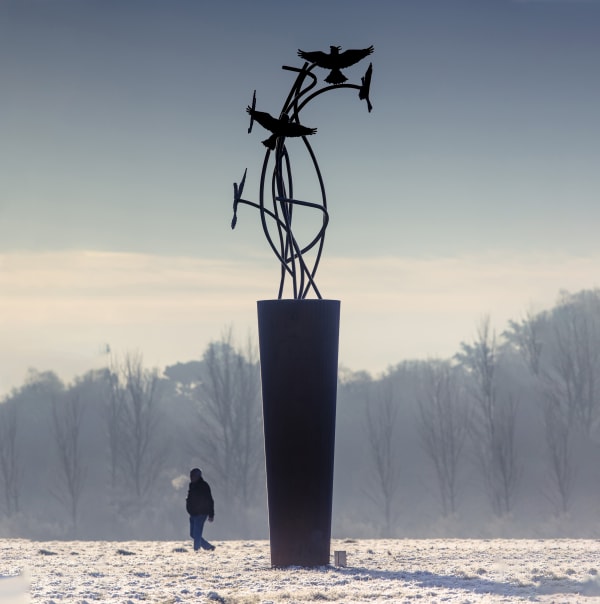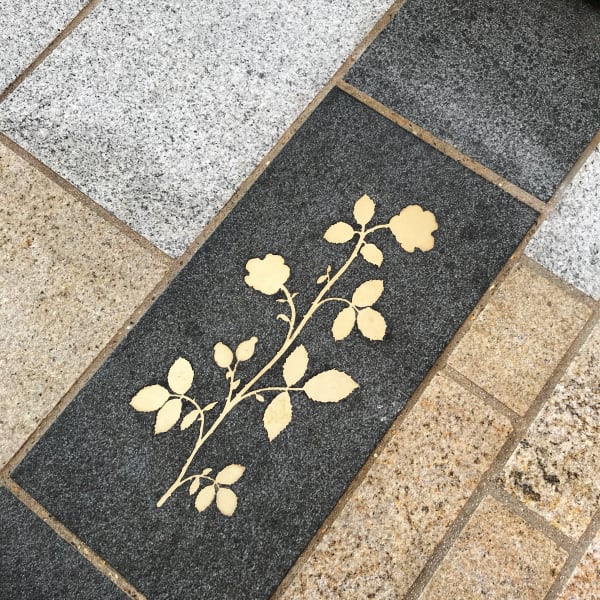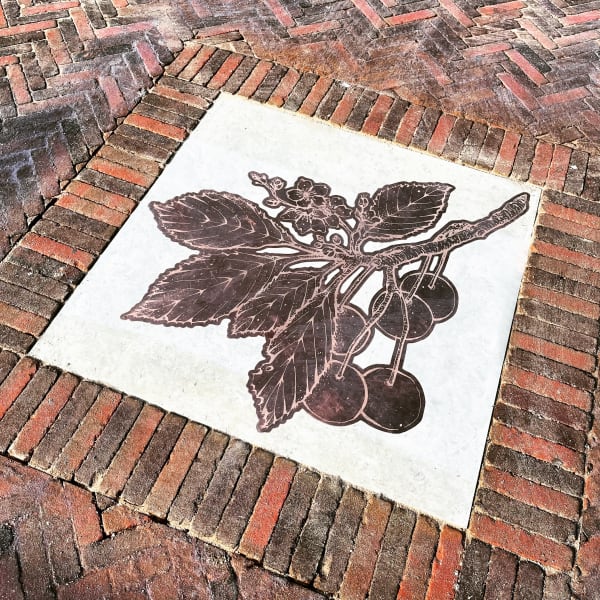-
-

Skylarks
Public Art Sculpture Berkshire UK
Corten Steel x 2 unique
-

Crown
Public Art Sculpture Oxfordshire
St Bees stone, brass, steel
-

Beacon
Public Art Sculpture Berkshire
Granite, brass, resin, solar powered light
-

ARTIST SKETCHBOOK
Public Art Wiltshire
ACM Panels
-

Birch
Public Sculpture Berkshire
Jesmonite, brass (5x unique benches)
-

Lepidoptera
Public Art Berkshire
Hand drawn gobo projections (15 x unique lights)
-

Herbarium
Public Art Berkshire
Vitreous enamel, steel
-

PONDLIFE
Public Sculpture London
Brass
-

Treasure
Public Art Berkshire
Granite, brass (36 x unique pavers)
-

Touching Riverdown
Public Sculpture Wiltshire
Scoutmore, terracotta, steel (6x unique pillars)
-

Cotton
Public Art Kent
3x Corten Steel sculptures
-

BOW
Public Art Gloucester
Bronze
-

Orchard Trail
Public Art Oxfordshire
Scoutmore, porcelain interactive trail
-

SQUIRRELLED AWAY
Public Sculpture East Sussex
Laser cut, powder coated steel
-

Gather
Public Art Wiltshire
Sandblasted and inlaid porcelain
-

SWIFTLY TRAIL
8x zinc frottage disks inlaid in scout more stone, 4x frottage pillar panels (inc braille) in oak, info map, trail signage, interactive floor games. Oxfordshire An interative trail across Heyford...
-
-
PUBLIC ART - FAQ
WHAT IS PUBLIC ART?
Public art refers to temporary and permanent artworks that are made and installed in public spaces and intentionally designed to be accessible to all.
WHO COMMISSIONS PUBLIC ART?
My artworks are commissioned by a wide range of art consultants, local authorities, developers and architects.
WHO FUNDS PUBLIC ART?
Public artworks are typically funded through public-private partnerships. My commissions tend to be paid for by housing or public realm developers as a result of ‘Section 106’ (or similar ‘% for art’) local authority planning requirements to include bespoke artworks for new developments. Public art can also be funded for additional public sector policies such as heritage, health and wellbeing, education and tourism as well as to meet private sector ESG policies.
WHY PUBLIC ART IS IMPORTANT
Public art matters because it creates free access to the arts, engaging a broad audience by being situated in places where people live, work, and play. It contributes to community identity, fosters pride and enhances the aesthetic appeal of urban and rural environments for residents and visitors.
KERRY LEMON - PUBLIC ARTIST
I believe that public art can activate our public spaces for the benefit of local residents and visitors. I have extensive experience of creating bespoke, site specific artworks with and for communities with a current portfolio of 78 works installed across the UK including; public sculpture, murals, integrated art works (into façades, pavements, landscapes) and functional pieces (lighting, furniture, fencing etc). My practice is informed by my B Corporation status and goals to support communities and biodiversity in every commission.
KERRY LEMON - COMMUNITIES
-
Genuine creative engagement
-
Targeting those in need of quality FREE creative activity
-
Focus on long term legacy
-
A circular and accessible approach to creative activities ensuring all creative materials bought for communities stay within those communities
-
Mentoring a local femxle artist on every commission
KERRY LEMON - BIODIVERSITY - REGENERATIVE SUSTAINABILITY
-
Utilising my artwork as a tool for people to engage with local plants, animals and landscapes
-
Creating improved habitats wherever possible (recent sculptures have incorporated new homes for insects, hedgehogs and bats)
-
Collaborating with scientists/ building teams of experts for each project
-
Embedding PEBs (Positive Environmental Behaviours) as part of community outreach events
WHAT I THINK IS NEXT FOR PUBLIC ART?
- MORE than decorative - PARTICIPATORY & EXPERIENTIAL
- PEOPLE centred BUT more than human design
- TEMPORARY rather than permanent especially events based
-














